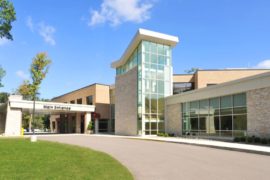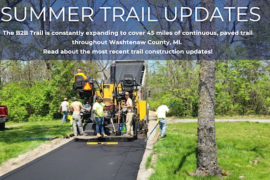By Melissa Sheldon / AA Spark Director of Research
Key findings show that most rankings either remained stable or have improved since the 2020 report was released.
Ann Arbor SPARK recently released the fifth iteration of its Benchmarking the Ann Arbor Region report. The purpose of the report is to take the pulse of the Ann Arbor region in comparison to a specific competitive set of technology-driven communities and their economies on a regular basis. The objective is not to make policy recommendations, but to provide clear, unbiased data with regional analysis on a series of metrics that are often applied without context.
The eight metrics analyzed in the report are:
- University R&D
- Population Movement
- Share of Remote Jobs
- Venture Capital Activity
- Housing Affordability
- Percent of People Experiencing Poverty
- Driving Industry Employment
- Labor Market
The data and analysis for each metric will answer some questions, and hopefully spur additional thought, questions, and action.
“Ann Arbor’s enduring appeal for innovation and business is undeniable, yet we must acknowledge the shifts in work dynamics, residential preferences, and personal priorities,” said Paul Krutko, Ann Arbor SPARK president and CEO. “Adapting to these changes, Ann Arbor SPARK underlines its dedication to addressing these dynamics, fostering opportunities for communal advancement. Anchored in principles of equity and environmental responsibility, we pave the way for inclusive and sustainable growth, working towards shared prosperity.”
NOTABLE FINDINGS
Ann Arbor continues to hold the top spot for University R&D expenditures — the amount each university spends on research and development. This metric is a valuable indicator of a region’s inclination for risk-taking, proving ideas, and adding to the innovation pipeline. Additionally, R&D investments help to build a conduit of research for future innovations, feeding a region’s entrepreneurial ecosystem.
Across the remaining set of metrics, Ann Arbor ranked:
- Third in population movement, or net migration, down one spot from the previous report. Washtenaw County is still the most popular destination for movers within Michigan.
- Third for share of remote jobs. The high ranking implies that a lot of existing jobs within Washtenaw County are tech-based and easily done from home, which is in line with the increasing number of tech-based jobs in Washtenaw County’s economy.
- Third for venture capital activity. As a result of controlling for population, Ann Arbor continues to rise above most other regions in this category.
- Fifth in housing affordability, which is up two spots from seventh in the previous report. There is a perception of Washtenaw County as an expensive housing market. This is borne out in the data when compared to Midwestern and rust belt cities. However, when compared to Austin, Berkeley, Boulder, and Portland, Ann Arbor is relatively affordable. Especially now with inflated housing costs across the nation.
- Ninth for the percentage of people experiencing poverty. Paired with other metrics like housing affordability and unemployment, this paints a significantly different picture of the entire competitive set of regions. Including it in the report is necessary to understand that while many of these regions are listed on “best places” lists and touted as high growth technology economies, these benefits are not enjoyed by all.
- Tenth in driving industry employment, which is down one spot from the previous ranking.
- Ninth in unemployment rate and eighth in labor force participation. These key labor market metrics are important for understanding labor shortages in areas where employer demand for talent is high.
ABOUT THE COMPETITIVE SETS AND DATA
Many of the selected regions were chosen due to their inclusion in anecdotal comparisons to the Ann Arbor region. However, where possible, the data have been normalized for population. Most metrics are compared at the county level, some at the city, and some at Metropolitan Statistical Area (MSA). It’s important to note that the data used in this report does not yet include the full economic impact of the COVID-19 pandemic.
New this year is the addition of West Lafayette, IN (Purdue University) to the competitive set (replacing Bloomington, IN/Indiana University).












